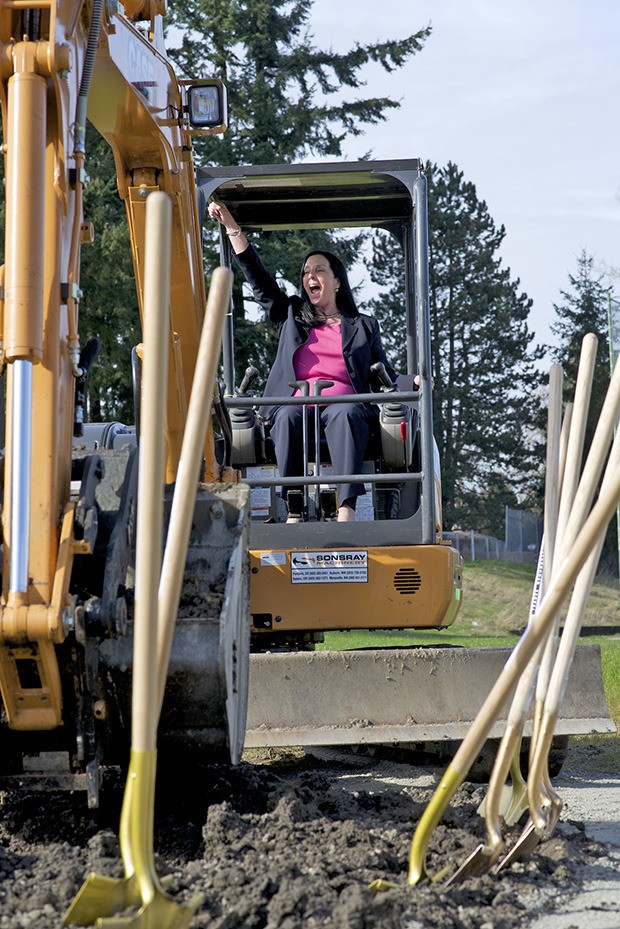Green River Community College’s industrial technology buildings are slightly deficient after 50 years.
From cramped auto mechanic bays to exposed wiring to classrooms with a single window, the existing facility has been in drastic need of renovations. Instead of renovating the aged building, college leaders have chosen to demolish it and build an entirely new complex dedicated to practical trade skills.
“These are extraordinary careers that have built America,” said Joshua Clearman, dean of Technology and Trades Divisions and Workforce Education at Green River.
The project has had a troubled history that started more than 20 years ago, when then-president Karen McGavin elected to replace the older building. Funding restrictions and shifting educational priorities toward four-year degrees led the college in other directions.
The school shelved the project indefinitely during the economic collapse of 2008, and it was only in the last two years that the school could bring the project out of mothball status to the tune of $2 million. Much of that money was tied up in redesigning plans and schematics that were many years old at the time.
Producing the plans for the building has taken some time. A team of architects had to review the original plans for changes, then advisors and teachers had to draft a fresh set of plans, which were turned over again to architects for code checks. Much of the money went to finishing the incomplete design document, said GRCC capital projects director Sam Ball.
The college finalized the design process and put it out to builders in 2013, and by the fall they had secured Walsh Construction as the contractor.
The 55,000-square-foot complex will house everything necessary for manufacturing, auto mechanics, carpentry and metal fabrication. It is expected to open in 2015 and will cost $34.6 million, with the college fronting six million of those dollars.
“All these shops will match and mirror everything you see in industry,” Clearman said.
Clearman has high hopes for the programs, especially the dual bays at the automotive section. Ideally, he says, manufacturers ranging from Kia to Porsche will be able to stock the bays with their own experts and tools, making it easy to learn mechanics for a specific car type at Green River.
“We’ll have existing mechanics train here, and out students will all benefit ’cause they’ll go through the same thing. And the sky’s the limit,” Clearman said. “We going to talk to Porsche, we’re going to talk to Mercedes.”
Clearman says that in the last year and a half many graduates with bachelor’s degrees have returned to community colleges after finding few job prospects. The demand for trade jobs is increasing.
“I can’t tell you how many people we’ve had who graduated from a four-year degree, and now they’re back learning a specific trade,” Clearman said.
Numbers seem to back up Clearman’s assertions. As four-year degrees have found less demand in the past six years, two-year trade school degrees have been seen as more profitable. In a study published by collegemeasures.org, those students with two-year degrees made an average of $10,000 more in the first year out of college over their four-year counterparts.
While GRCC has grown dramatically in the last eight years and is looking at adding a baccalaureate program, school president Eileen Ely says that they have no plans of competing directly with a four-year institution.
For now, teachers and students are looking forward to having a classroom where they won’t, as automotive teacher Dan Sorensen says, “have to move a garbage can to the middle of the classroom when it rains.”
Talk to us
Please share your story tips by emailing editor@kentreporter.com.
To share your opinion for publication, submit a letter through our website https://www.kentreporter.com/submit-letter/. Include your name, address and daytime phone number. (We’ll only publish your name and hometown.) Please keep letters to 300 words or less.

